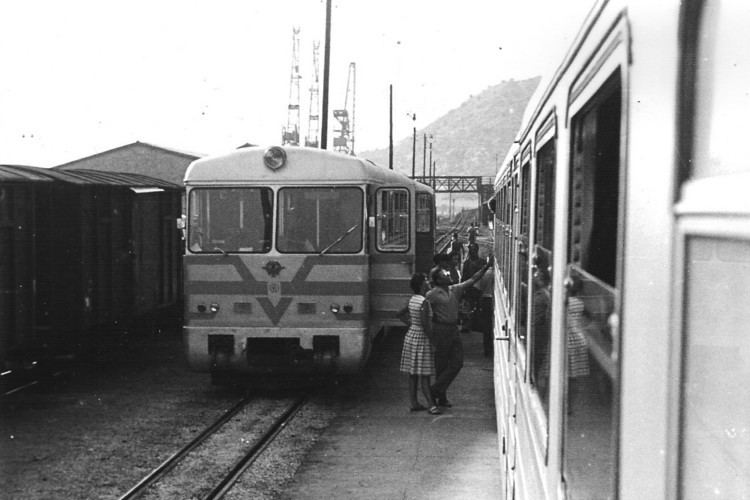 | ||
Most Bosnian-gauge railway lines were built during the Austro-Hungarian Empire. Several 760 mm (2 ft 5 15⁄16 in) gauge railways were planned in order to link the extensive narrow-gauge railways in the Austro-Hungarian Empire with those in Bosnia and Herzegovina. Until the outbreak of the Balkan Wars in 1912 several were constructed.
Contents
- Steinbeis railway
- Spalato railway
- Bosna railway
- Narenta railway
- Dalmatian and Zelenika railway
- East Bosnian railway
- Bosanska MezgrajaBijeljina railway
- Sinj railway
- Banovici coal mine railway
- GraanicaKaranovac
- References
Between World War I and World War II the network was extended significantly, at the end connecting the Adriatic Coast with Belgrade, with the network growing to around 1500 km in length.
Construction of a new standard-gauge line from Sarajevo to Ploče on the Adriatic in 1966 replaced the 760 mm (2 ft 5 15⁄16 in) Narentabahn from Sarajevo to the coast and had the effect of isolating the south-western narrow-gauge system from the 760 mm (2 ft 5 15⁄16 in) railways starting at Sarajevo. With the demise of a connecting network all the other remaining narrow-gauge lines were then at risk and restricted to local traffic.
The system based on the Adriatic closed in 1975. By 1979 the rest of the Bosnian lines had closed. In Serbia the last 760 mm (2 ft 5 15⁄16 in) line closed in 1983. The most modern diesel railcars were sold to the Portuguese Railways (where they regauged to metre gauge for use on the Douro Valley metre-gauge lines, such as the Tua line), becoming Portuguese train type 9700.
Steinbeis railway
Approximately 400 km, 1902–75.
Built as a forest railway of the "Bosnische Forstindustrie AG Otto Steinbeis".
The Lička Kaldrma–Knin line was converted to standard gauge and incorporated in the "Unska pruga" route in 1948.
With connecting forest railways near Grmeč, Klekovača, Oštrelj, Manjača and Glamoč.
Spalato railway
Spalato Bahn (Splitska pruga); 104.5 km, built 1893–95, Connecting the Steinbeis railway with the Bosna railway to Sarajevo.
Bosna railway
Bosnabahn (BHStB), 355.2 km
Narenta railway
Narentabahn (Neretvanska pruga); 178.4 km, constructed 1885 – 1891.
Dalmatian and Zelenika railway
Dalmatiner Bahn (Dalmatinska pruga); 188,6 km, built 1901.
East Bosnian railway
Bosnische Ostbahn (Bosanska istočna pruga) 166.4 km, built 1906.
In the 1960s, plans were made to regauge the lines to standard gauge. However, this was not realised. On 28 May 1978 the line was closed for commercial traffic.
The track bed is currently quite well visible in the landscape, with several stations, tunnels still visible. A small part of the track is still in service as a heritage railway rebuilt between 1999 and 2003, Šargan Eight.
Bosanska Mezgraja–Bijeljina railway
Bosanska Mezgraja–Ugljevik–Modran–Bijeljina
An isolated 760 mm (2 ft 5 15⁄16 in) gauge railway.
Sinj railway
Split–Sinj (completed in Croatia); 40 km, 1903–62. A planned extension via Aržano to Bugojno (and further on existing tracks to Sarajevo) never materialized because of World War II and the line remained isolated from the Bosnian 760 mm (2 ft 5 15⁄16 in) network.
Banovici coal-mine railway
A 760 mm (2 ft 5 15⁄16 in) gauge industrial line opened in 1947 near Tuzla. Still in commercial operation.
Gračanica–Karanovac
Gračanica–Karanovac; 4 km, 760 mm (2 ft 5 15⁄16 in), 1898–1967
